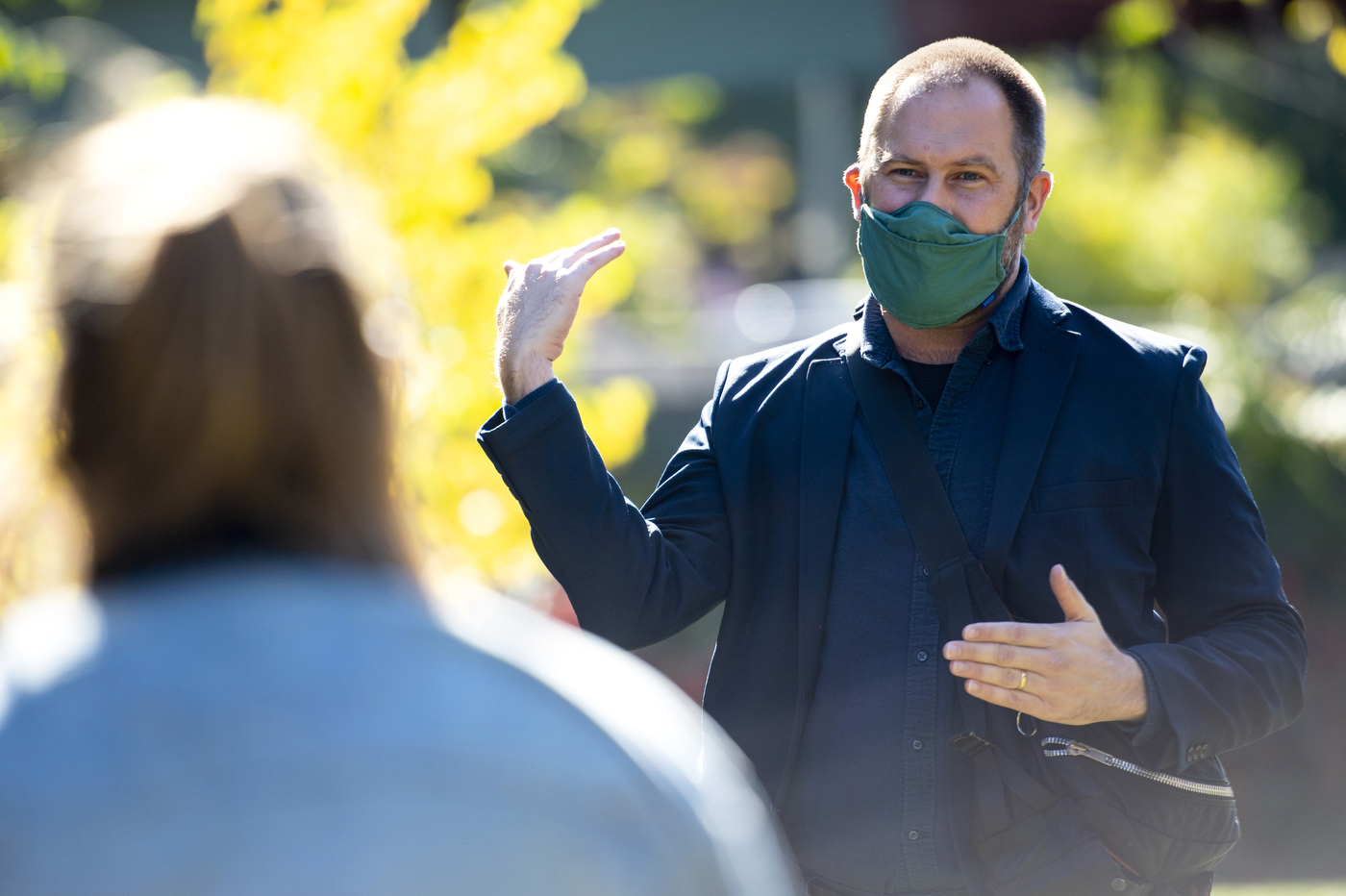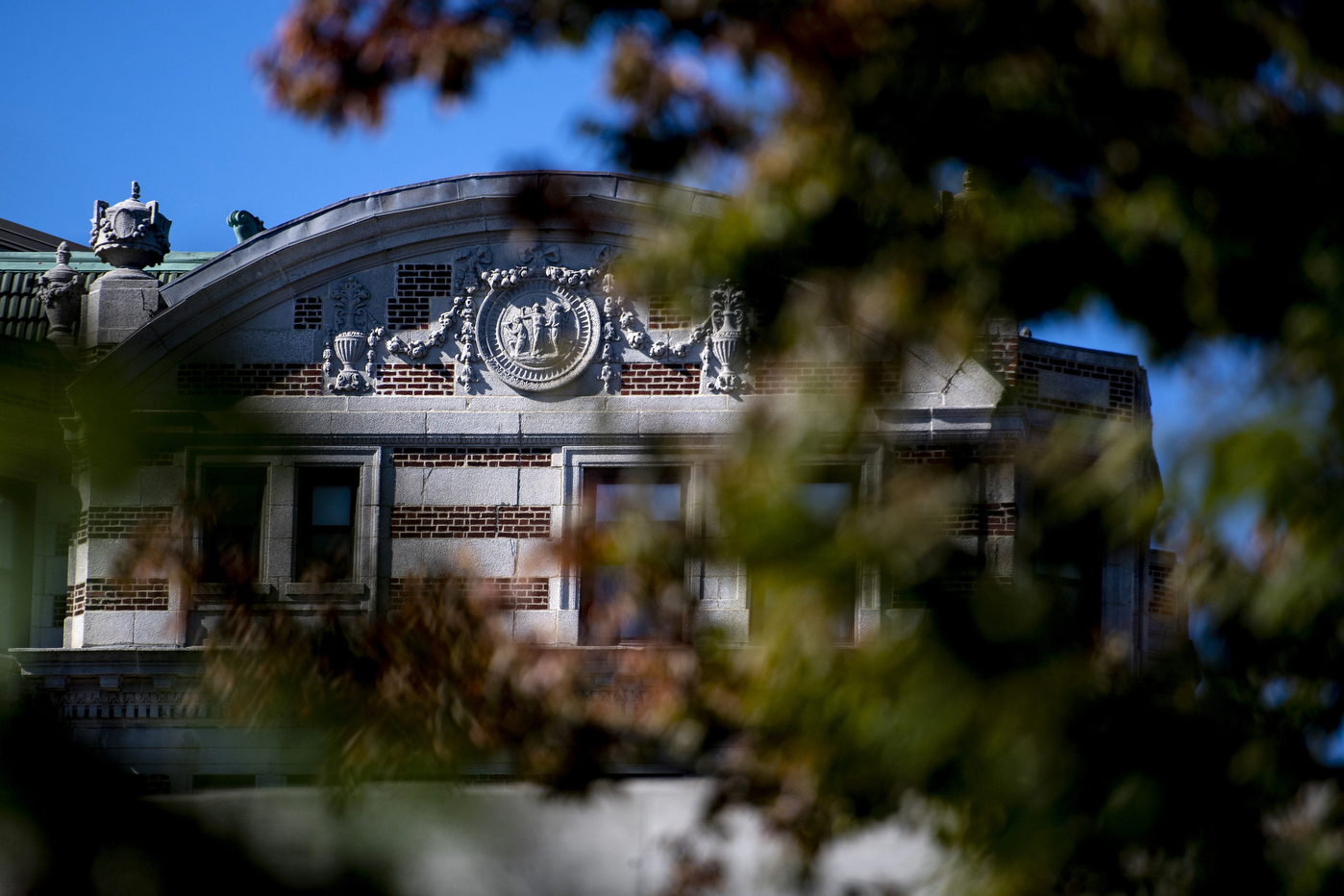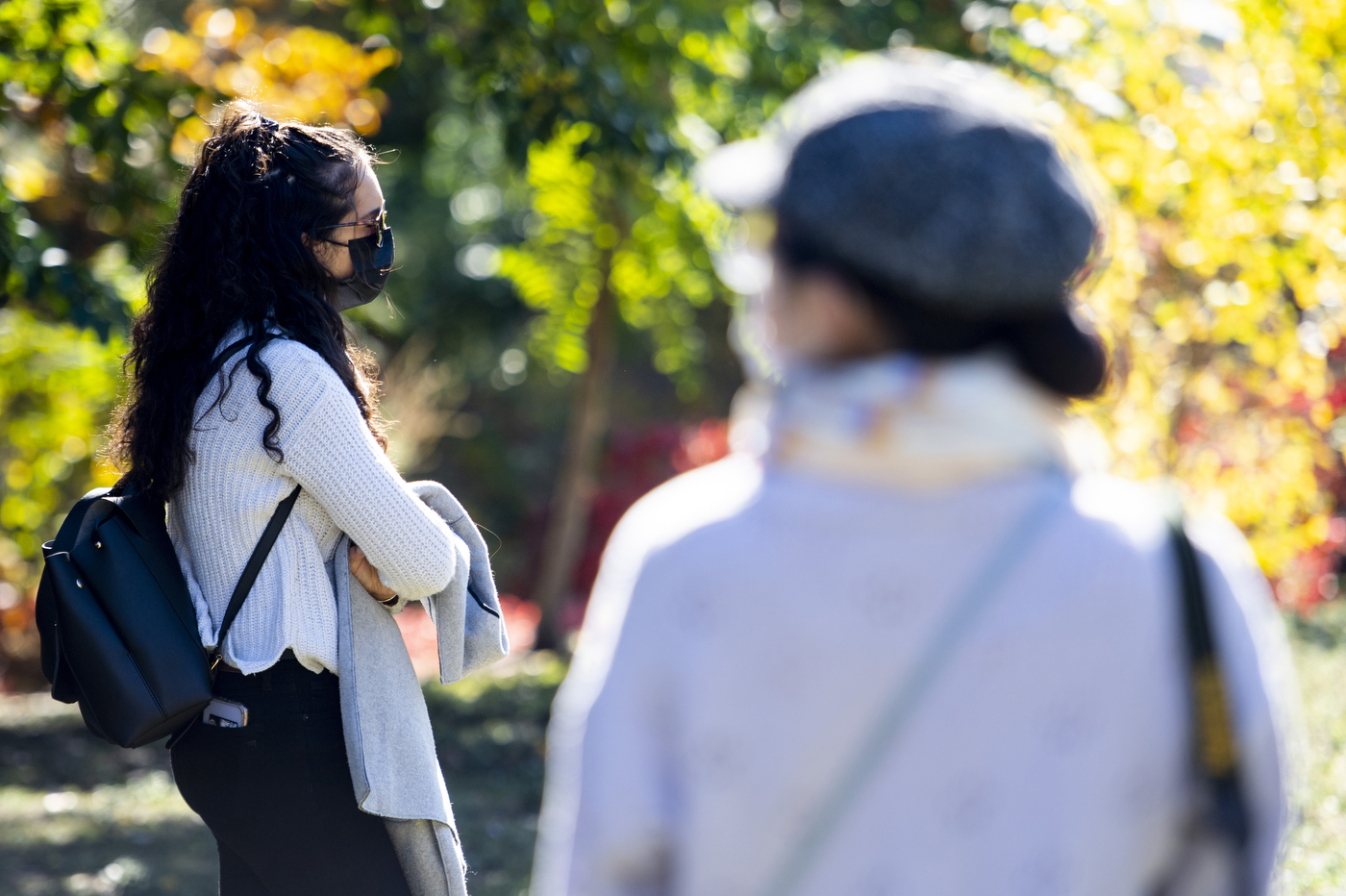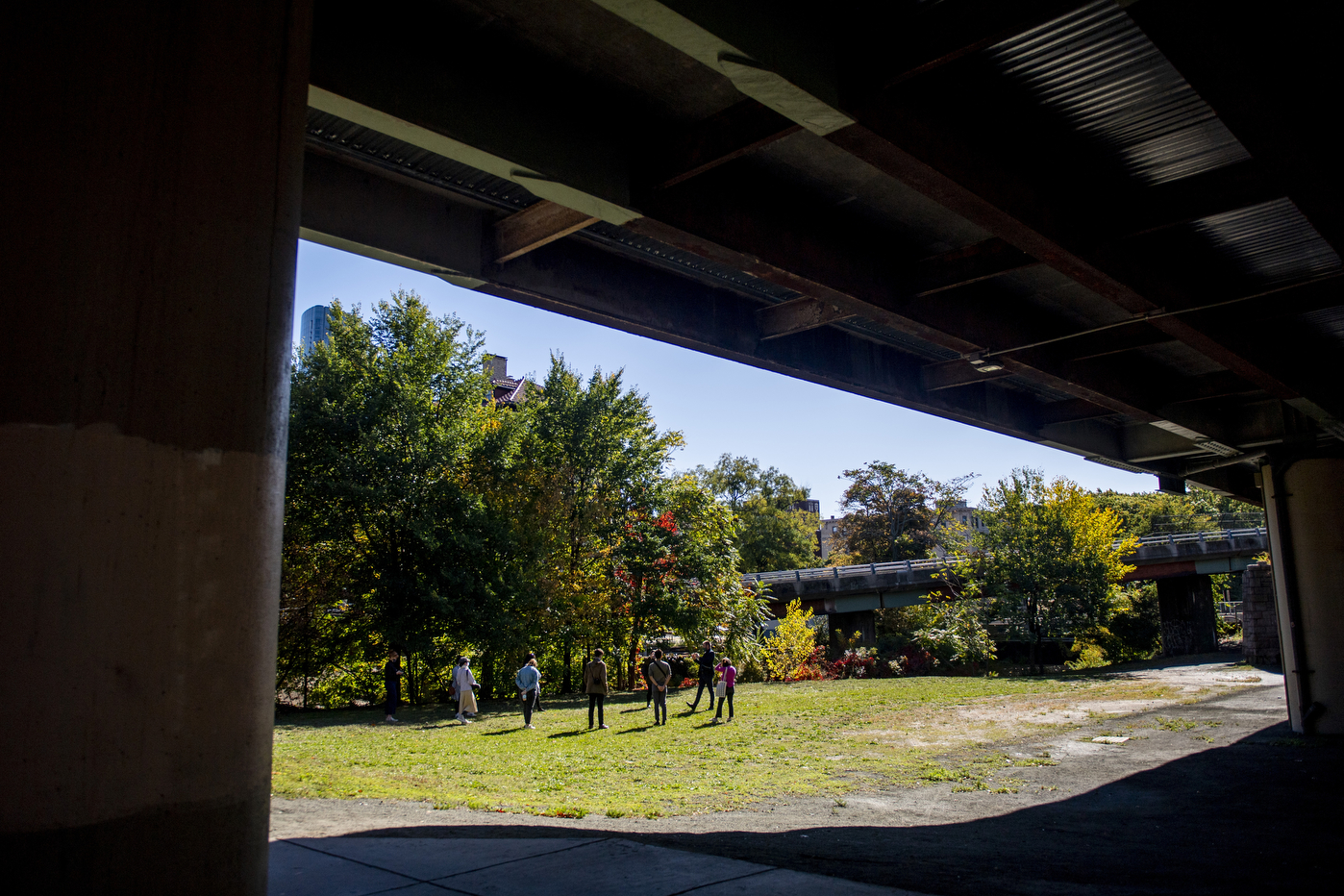
By Emily Arntsen
News at Notheastern
During a typical semester, it’s not uncommon for architecture students to spend upwards of 50 hours per week in the Ruggles Studio working on drawings and models. Some students even stow sleeping bags under their desks, just in case.
But now, with the pandemic restricting how many people can safely gather indoors, students and faculty in the School of Architecture have been forced to come up with creative alternatives to studio space and conventional lectures.
And for many professors and students, that means moving the classes into the parks and streets of Boston, and beyond.
“Boston has always been our urban laboratory where we can test the ideas of architecture and urban design in context,” says Dan Adams, associate professor of architecture and director of the School of Architecture. “This has been an opportunity to experiment with in-person engagement and actually getting out into the city.”
Adams is one of many architecture professors who have started holding classes outdoors, a change born out of precaution that turned out to be a valuable, hands-on learning experience.


For example, Adams was recently a guest lecturer during a field trip hosted by Sara Jensen Carr, assistant professor of architecture.
Her “Design Tactics and Operations” class was held at a section of public green space called Charlesgate, which Adams’ design firm, Landing Studio, is in the process of redesigning.
Students in this class will eventually draft hypothetical new designs for other parts of the Emerald Necklace, a chain of public parks designed by Frederick Law Olmsted that winds through Boston.
“It’s a fun approach to the current circumstances,” Adams says. “Students are spending time on site analyzing those spaces in person.”
Some elements of the classes are still virtual, which, Adams says, is actually beneficial in some ways. Now, he has the ability to include people from all over the world for class critiques and guest lectures.
“It used to be really Boston-centric in terms of who we invited to critiques,” Adams says, adding that local guest critics would typically come to class to give feedback on students’ work. “Now it’s easy and more normal to get critics from various specializations from all over the world to do a virtual critique.”




Having studio space is still important, Adams says, so that students can build large 3-D models for class and collaborate with peers. Mary Hughes, the school’s administrative officer, created a scheduling system for students to reserve desks for a maximum of three hours at a time with some first come, first served options available to ensure a safe capacity.
“Maintaining that social connectivity between students has been one of the biggest challenges,” Adams says.
Professors say using outdoor space has helped students keep those connections while opening up new possibilities for teaching and learning. For example, Kate Kennen, associate teaching professor in the architecture school, says her students really benefit from the in-person outdoor sessions.
For her class, “Design Tactics and Operations,” Kennen says gathering in person is helpful since a lot of the engineering problems that are covered in the course are best solved collaboratively.
“There’s some complicated math that goes into site design,” she says. “We’ve been doing the problems on the ground with chalk, and it’s much easier for the students to talk face-to-face.”




Kennen is also taking advantage of outdoor classes to expand her curriculum, especially in her “Plants, People, and Landscapes” class. Typically, most of the work in this class would be done inside, and students would learn about the plants without necessarily interacting with them.
“But what a better opportunity to use the outdoor environment as our studio,” she says. “Every single class we’ve held in a different plant community.”
For example, the class has been to the Breakheart Reservation in Saugus to look at woodland plants, the Charles River to observe shoreline plants, and around the Boston campus to examine urban trees. For students who can’t attend in person, a teaching assistant records the classes.
The class has also traveled to the Back Bay neighborhood of Boston to look at private gardens and learn about ornamental horticulture, and to the Arnold Arboretum to learn about the oldest public tree garden in North America.
Kennen encourages students to ride bikes to the field trips, and during the Charles River class, students went on a bike tour of the area.
“The point is for the students to feel safe and not have to take public transportation to get there,” she says. Plus, it’s an efficient way to get around—Kennen’s class was able to visit five different sections of the Charles River during one class period.
In general, Kennen says her students are really receptive to the traveling classes. In the future, she says, she’ll be sure to incorporate more fieldwork into the curriculum.
“I keep hearing that they love coming to class, especially compared to the social isolation of being at home on Zoom,” she says. “They’re so happy to be outside and see their peers.”
(Reprinted with permission from the News at Northeastern.)















